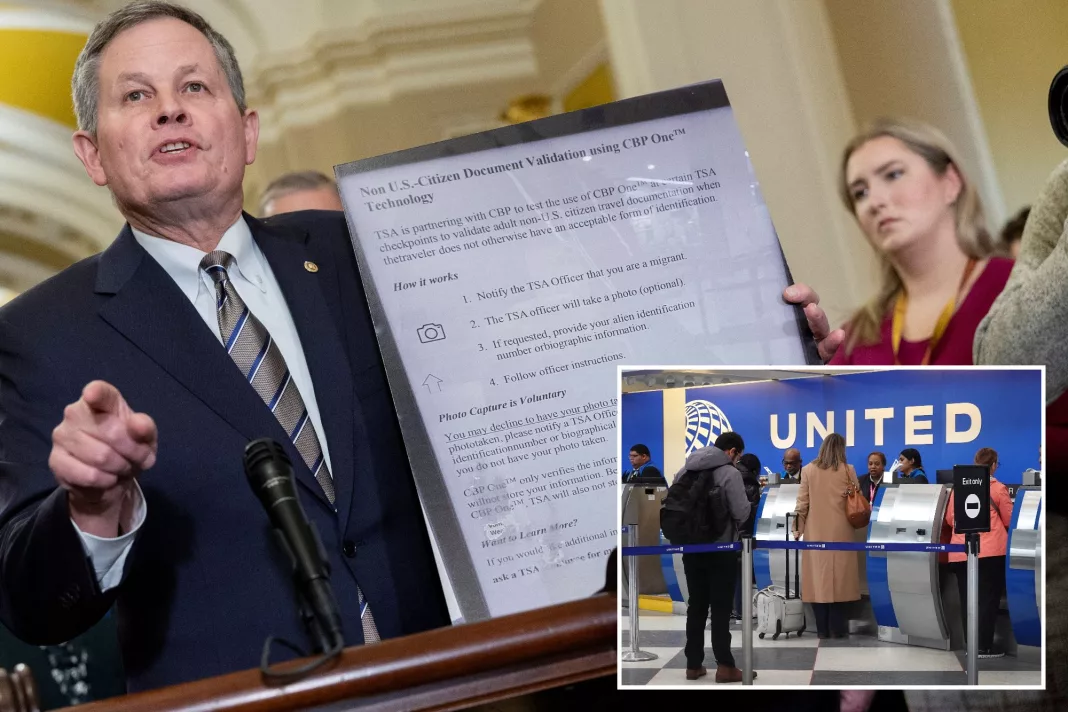Title: The Controversy Surrounding Migrants Flying Without Photo ID
Introduction:
In a surprising turn of events, migrants who have entered the United States using President Biden’s CBP One app are allowed to fly domestically without photo identification. This special treatment has raised concerns about security and fairness at airports. While Americans without photo ID face extensive scrutiny, migrants can bypass these procedures, highlighting a double standard. This article delves into the implications of this policy and the delayed implementation of the Real ID Act.
Heading 1: Migrants Allowed to Board US Flights Without Photo ID
Heading 2: Special Treatment for Migrants Raises Concerns
Heading 3: Delayed Implementation of the Real ID Act
Migrants Flying Without Photo ID:
According to signs posted at airports, migrants without “an acceptable form of identification” are exempt from the requirement of presenting a photo ID to board a plane. This leniency is reserved for migrants who have used President Biden’s CBP One app to enter the country, totaling at least 422,000 individuals.
Airport Procedures for Migrants:
At Miami International Airport, a sign instructs migrants to notify the TSA officer about their status and provides the option to have a photo taken. However, the sign emphasizes that photo capture is voluntary, leaving room for potential security risks.
Double Standard:
While migrants can fly without photo ID, Americans without proper identification face lengthy interrogations and thorough luggage checks. This discrepancy in treatment raises concerns about fairness and prioritization.
Personal Experience:
A businessman named Connor Esraelian shared his experience of forgetting his wallet with photo ID while trying to board a plane from San Francisco to Chicago. He documented the 75-minute ordeal on TikTok, describing it as a “nightmare.” This highlights the stark contrast between the experiences of migrants and American citizens.
The Real ID Act:
The Real ID Act was enacted following the 9/11 terror attacks to prevent individuals from using lax forms of identification to board planes. However, its implementation has been repeatedly delayed, with the current start date set for May 2025. This delay has allowed illegals to exploit the system and board planes using inadequate identification.
Normalization of Being Illegal:
States like New York and Illinois have taken steps to normalize being illegal by issuing licenses that blur the distinction between legal and illegal residents. Illinois discontinued its license for illegals, which had a purple stripe and was labeled “not valid for identification.” Now, both legal and illegal residents qualify for the same “standard license” with a vague reference to the May 2025 deadline. New York also issues a “standard” license available to everyone, including illegals, with a notation that it is not for federal purposes.
Implications of Blurring the Lines:
The blurring of lines between legal and illegal residents through ID cards poses a risk to security. While these cards may not work on planes, they can potentially allow unauthorized individuals access to secure areas. With an open southern border and millions of migrants from various countries, including those hostile to America, our nation’s safety is at stake.
Remembering 9/11:
The article concludes by urging readers not to let the Biden administration and the hard left compromise national security. The tragic events of 9/11 serve as a reminder of the devastating consequences that can arise from lax identification policies.
Conclusion:
The controversy surrounding migrants flying without photo ID highlights the need for consistent and fair identification procedures at airports. The delayed implementation of the Real ID Act and the normalization of being illegal through ID cards pose significant risks to national security. It is crucial to prioritize safety and prevent potential threats by ensuring proper identification protocols are in place.

